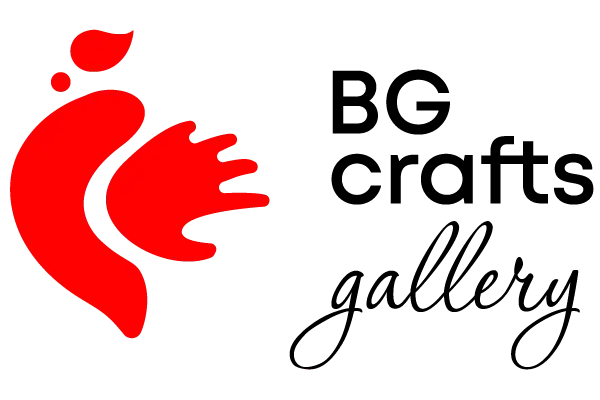Visit BG Crafts Gallery and discover artworks by contemporary Bulgarian artists!
Bulgarian folk embroidery
Folk regions and folk costumes
Seven folklore regions are known: Severnyashka, Shopska, Pirinska, Rhodopeska, Thrace, Strandzhanska and Dobrudzhanska. The difference between them is visible not only in the folk costumes characteristic of the regions, but also in their characteristic embroidery.
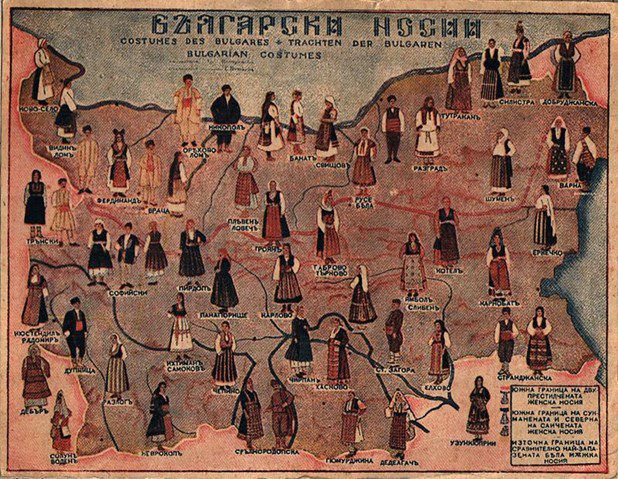
Regional differences
Each region has its own "code", woven into the decoration of each costume. This code usually consists of unique motifs, and ornaments, or "embroideries" that are characteristic of the culture in that region, and carry a special meaning to the people there.
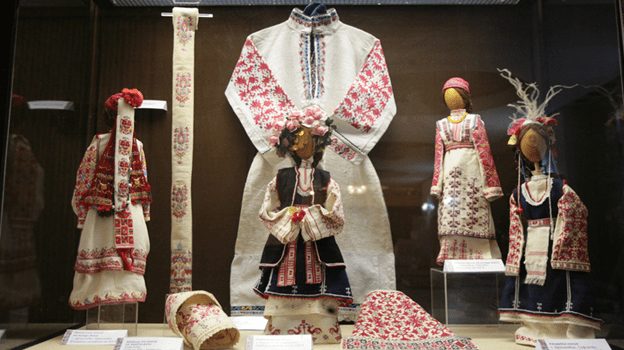
Folk costumes in Bulgaria mainly consist of trousers, shirts, waistcoats, and belts for men, and dresses (sukmani) with aprons, for women.

Folk costumes have been worn for centuries. In many villages and regions of the country, the wearing of costumes continued until the beginning of the 20th century. The costumes and clothing are usually handmade, and the process of their creation is a craft that is passed down from generation to generation. Traditional materials are used to make the clothing, including linen, hemp, wool, silk and cotton.
Embroidery is a big part of creating a costume, and something that all girls learn from a very young age. Of all the home crafts, the skills to create clothing, spinning, sewing and weaving have always been the most valued. The symbolism of the embroidery is tied to local beliefs that certain patterns protect the human body from evil spells, and spirits. Traditional clothing exists in two forms: one for everyday use, and the other for traditional festivals, and formal occasions.
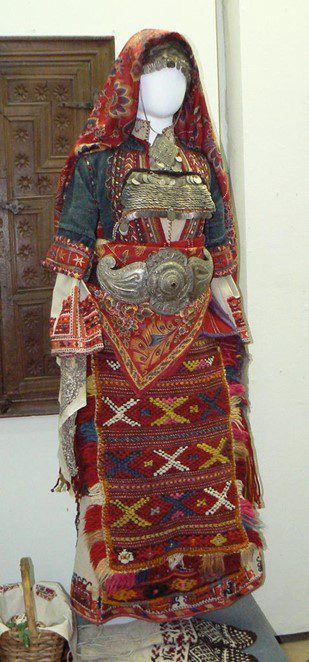
Women's Costumes
Traditional costumes are generally divided into four categories – garments with one or two aprons, tunics, and the classic "saiya" garment. The combination of dresses, aprons and shirts is usually richly embroidered in colors typical of the region, as well as various folk motifs. The color red dominates most Bulgarian folk costumes. Other colors such as white, black and green are also typical of traditional clothing.
Men's Costumes
Compared to women's costumes, men's are much simpler in both shape, and color. There are two main types of men's clothing – one is white, and the other is black. The white version of the costume consists of a plain shirt, a wide belt, a belt, and several outer garments. Outerwear emphasizes the shape and structure of the costume, while embroidered patterns and colorful wool bands ("gaitans") are a more linear type of decoration. An essential part of the costume is the belt, which can be rich in colors, and ornaments.

The black version of the men's costume is traditional for the Rhodope region, and usually consists of a white shirt, and wide, woolen trousers (most often in a dark color). The other parts include a girdle, a belt, a cap, and an outer garment (an outer garment with sleeves or a vest). This type of clothing is particularly popular, as it is suitable for the main traditional occupations in agriculture, and animal husbandry.
Motifs and ornaments
Bulgarians have taken a truly unique approach to the type of motifs and ornaments they choose to use on a piece of traditional clothing. You can feel the influence of the cultural heritage of various civilizations that inhabited the Bulgarian lands, such as the Thracians, for example. Their beliefs are still present, and are largely part of the local culture and customs. In some parts of the country, old pagan rituals are still practiced, such as the well-known festival "Nestinarstvo" - a ritual of walking and dancing on embers.

In the past, knitting was an essential part of women's and girls' everyday life, and a special ritual was dedicated to this activity. During spring festivals, all of the girls would embroider several different stitches and patterns on a piece of cloth and throw it down the river, believing that it will make their fingers as fast as the rushing spring water. For some old embroiderers, individual stitches and motifs have the same power and meaning as letters, when we read.

Embroidery is considered an indestructible barrier against evil, and foreign malevolent forces. Traditionally, every Bulgarian woman would decorate her clothes. Furthermore, each woman was buried in her ornate wedding gown, so that her husband would recognize her in the "afterlife".

Bulgarian traditional embroidery is unique both due the abundance of motifs and stitches, as well as the wealth of colors used for their production. According to the technique of execution, two types of embroidery can be distinguished - one based on planning the number of stitches on the canvas, and the other performed using a drawing sketched on the textile. The first type offers a greater variety of creative possibilities.

Among the motifs used, the largest share is floral, with stylized flowers with four, six or eight petals being the most common. The usual practice is to represent them full-face with the pistil of the plant visible as a symbol of the new beginning. One finds embroidered roses, carnations, tulips, periwinkles, vines and apples, as well as the ancient pattern of the tree of life.
The oldest motifs, although very rare, are the animal motifs, simplified and generally schematic images, mostly in profile, most often of roosters, ducks, pigeons, peacocks, hens, horses, etc.
Even more rarely, human figures can be found in the embroidery.
Along with floral, animal and human motifs, purely geometric figures are also found in Bulgarian embroidery. Among them, lines (straight lines, arcs and zigzag lines), triangles, quadrilaterals, rhombuses, and polygons predominate. Sometimes they are used separately, but mostly in combination with other types of shapes and figures.
The special artistic impact of Bulgarian needlework is due to the masterfully achieved harmony of materials, technique, and decoration. The main decoration methods used include geometric schematization, abstraction, and oversimplification. Over time, the real floral, animal and human figures became more and more simplified, with the Vezbars focusing their attention on a separate part of the motif, emphasizing only the essential and characteristic of it, eliminating everything else, resulting in abstractions and of the main elements and motifs. Gradually, a significant part of the models lost their pictorial roots due to excessive schematization, and took on the appearance of geometric figures.
One of the most important conditions for turning an embroidery into a work of art is the right composition, including rhythm, symmetry, and contrast.

Colorfulness is one of the most valuable qualities of Bulgarian folk embroidery. It is built on different color combinations – bright and clean, saturated and dark, harmonious and contrasting.
Typical colors are red, green, blue, brown, and black. Shades of red prevail - from the darkest red, to pink. In some ethnographic areas, around Pleven and Razgrad for example, brown and black prevail.

From the point of view of color, the Elhovskie sewing machines are extremely interesting. There are almost no predominant colors in them. All colors, as a rule, have practically the same presence in the composition, and in addition, individual color shades are difficult to combine and harmonize - red to orange, purple, deep pink, green, blue, and deep yellow.
Festivals and events related to traditional Bulgarian costumes
Festivals are an important part of Bulgarian culture. They preserve old, local traditions and customs for centuries, which Bulgarians are proud of. Some festivals are held annually. Today, popular events include the Rozhen Folklore Assembly, and the Folk Costume Festival in Zheravna.
Festival of folk costumes in Zheravna
The festival takes place in the Zheravna architectural reserve, and is the largest event of its kind. What makes this event so amazing is the fact that all attendees must be dressed in national costumes throughout the festival. People are not allowed to bring in any modern items such as mobile phones, and cameras.
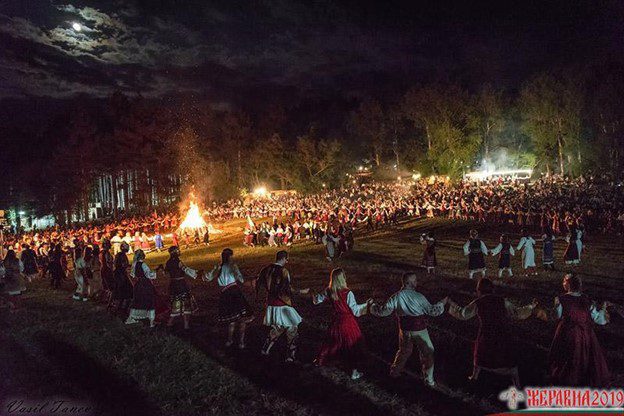
Rozhen Folklore Assembly
The Rozhen Folklore Assembly takes place every four years in August, and it is a national event honoring Bulgarian folklore, and traditions. It is the largest folk song festival in the country. For two consecutive evenings, people have the opportunity to see performances by some of the most prominent Rhodope singers. The symbol of the congregation is the characteristic orchestra Sto Kaba Gaidi (One Hundred Bagpipes).
Museums where you can see authentic folk clothing
1. National History Museum in Sofia

2. Regional Ethnographic Museum in Plovdiv
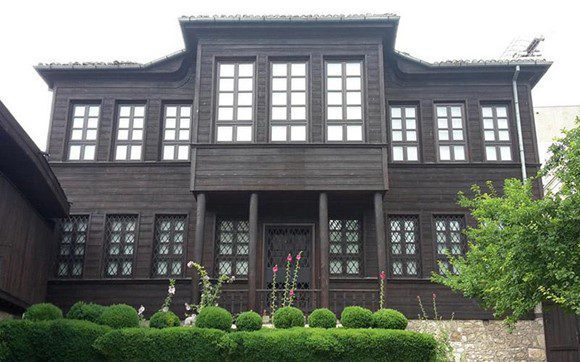
3. The Ethnographic Museum in Varna
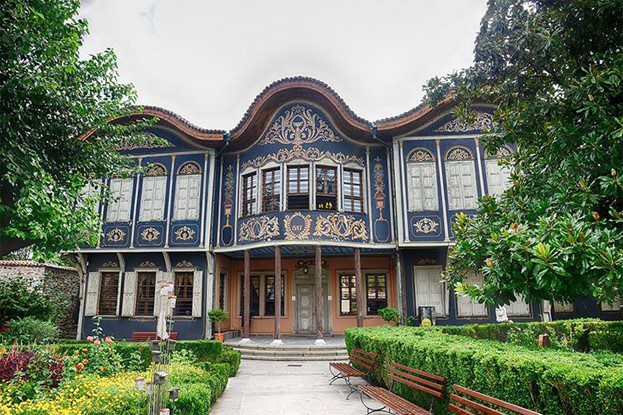
Follow us for more information: BG Crafts Gallery
References:
"Bulgarian folk seamstresses", Elena Todorova; part I and part II, Plovdiv - 2015
www.bnr.bg
